Textured glass also called pattern glass, textures is created by running a ribbon of molten glass between two engraved steel roller, impressing it with the nature-inspired continuous design,HHG range of pattern glass offer just the right transmittance,the degree of obscure depends on the textures, pure style or to allow it suitable for areas requiring translucency for privacy and control light,this kind of cast glass allows light transmission same as clear glass into internal rooms without lose any natural light,it use durability era than other glass panels, easy cleaning, resistance of scratch and fingerprint.Decorative glass offer a wealth of opportunities attractive options to architects,application for naternal glazing,furniture,door, partitions,cathedral glass,cupbroad,shower room,cabinet and a range of obscure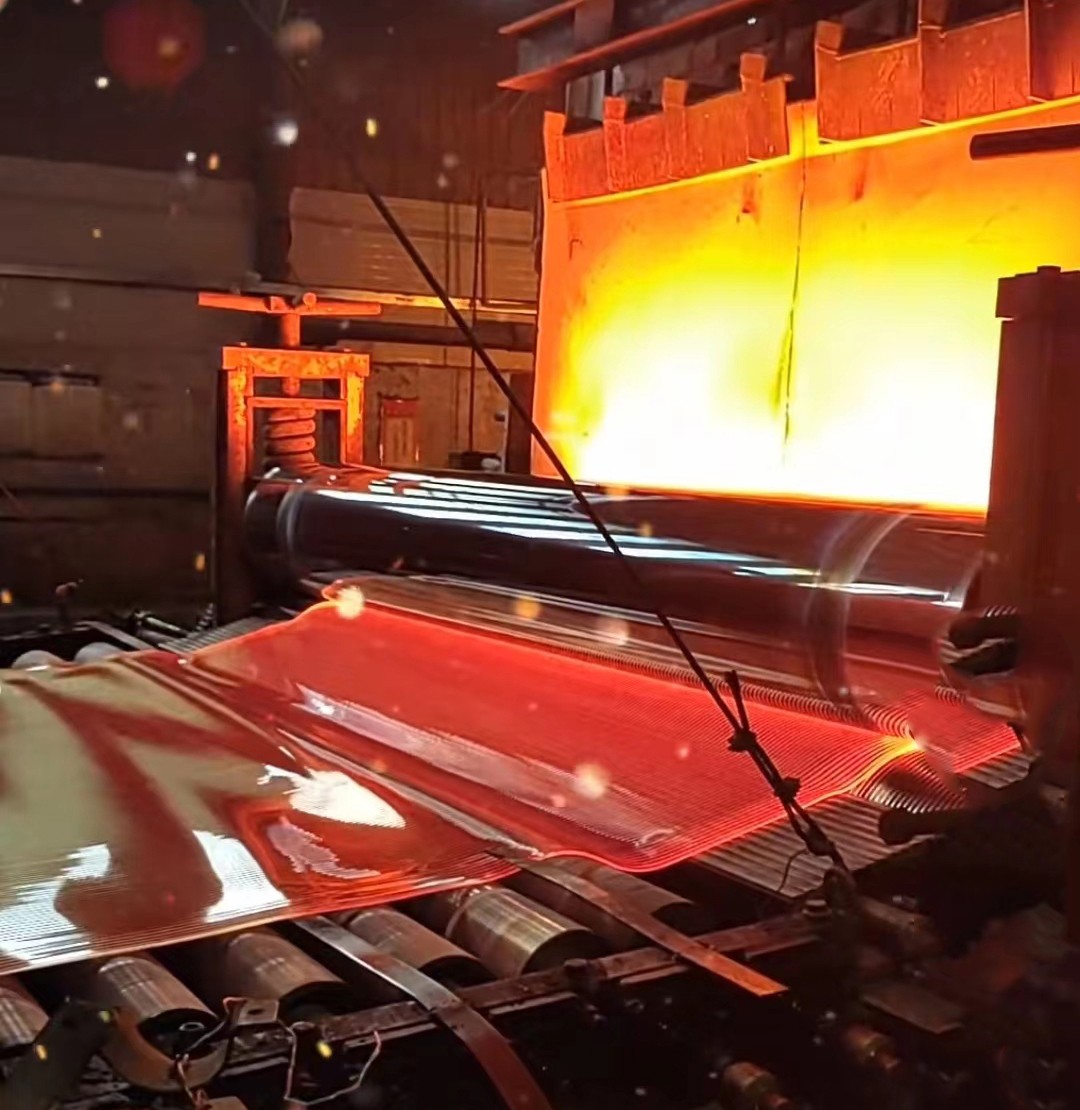 glass for you home,accept client requirement pattern bulk produce or design texture.
glass for you home,accept client requirement pattern bulk produce or design texture.
Advantages:
Creat Various level of privacy
variety of building's textures appearance.
Soften sun light, so as adjust space of room.
Maintenance friendly
Processing options:
Clean Cut and drilled,
toughened,
laminated(pattern glass+pvb film+clear window glass),
Acid etched
Back mirrors
Master sample set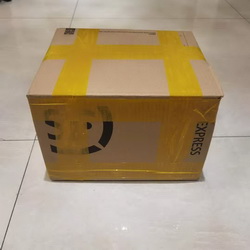
*Master sample set is built for 100x150mm samples of glass sheet,which package in one box,include 40pieces kind of glass textures.
Price:$260---don't include shipping.
*Truck charge: $180 arrive to west europe,north America,australia.new zealand.
For other sample orders please contact us lihong@huihuaglass.cn
*Dimension approx:200x250x300mm
*Weight approx:10kgs/box set
*Note Estimated Shipping: Actual shipping weight may be slightly higher or lower, shipping charge is an estimate only and actual shipping may vary.
TEXTURED GLASS FAQ USER GUIDE
What is textured glass ?
Textured
glass refers to a type of glass that has a surface with a variety of
patterns, textures, or designs. It is produced by altering the surface
of the glass during its manufacturing process. The texture can be
created through techniques like rolling, pressing, or casting, where the
glass is passed through rollers or molds with specific patterns or
textures.
Textured glass can have different levels of opacity or
translucency, depending on the design and treatment applied. It can
range from lightly textured, providing a subtle effect, to heavily
textured, creating a more pronounced and detailed pattern.
The
purpose of textured glass is often to enhance privacy, diffuse light, or
add aesthetic appeal to windows, doors, partitions, and other glass
surfaces. Some common types of textured glass include frosted glass,
patterned glass, ribbed glass, and reeded glass, each featuring distinct
patterns and textures.
What is textured glass called?
Textured
glass is commonly referred to as "patterned glass" or "frosted glass."
It is a type of glass that has a surface with various patterns or
textures applied to it. These patterns can be created through techniques
such as etching, sandblasting, or the addition of acid or chemical
treatments. The resulting textured surface diffuses light, providing
privacy while still allowing some light transmission. Patterned glass is
often used in windows, doors, partitions, shower enclosures, and
decorative applications.
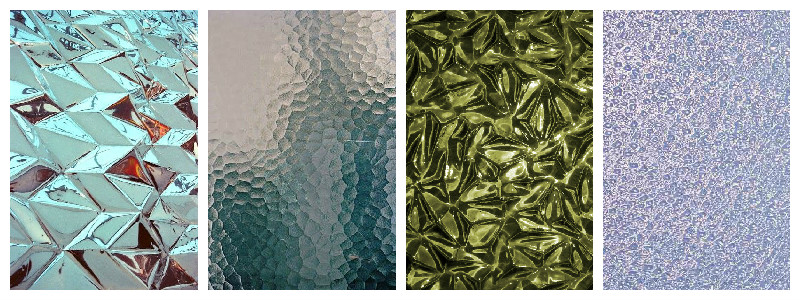
Types of Textured Glass
There
are several types of textured glass available, each with its own unique
patterns, textures, and characteristics. Here are some common types:
Frosted
Glass: Frosted glass has a smooth, matte appearance created by
sandblasting or acid etching the surface of the glass. It scatters
light, providing privacy while allowing some light transmission.
Patterned
Glass: Patterned glass features various designs or patterns imprinted
or embossed onto the surface. This type of textured glass can include
designs like floral patterns, geometric shapes, or abstract motifs.
Ribbed
Glass: Ribbed glass has vertical or horizontal ridges on its surface,
creating a textured effect. The ridges can be uniform or irregular in
size and spacing.
Reeded Glass: Reeded glass has parallel linear
ridges running vertically on its surface. These ridges resemble the
appearance of thin, vertical lines or grooves.
Seeded Glass:
Seeded glass has small air bubbles or seeds embedded within the glass,
giving it a textured and slightly irregular appearance. This type of
glass can add a vintage or rustic touch to a space.
Rain Glass:
Rain glass has a pattern resembling raindrops running down the surface.
It offers privacy while still allowing light to pass through.
Textured
Stained Glass: Stained glass can also be textured, combining the visual
effects of both stained and textured glass. The textures can enhance
the overall design and add depth to the colors and patterns of the
stained glass.
These are just a few examples of the many types of
textured glass available. Different manufacturers may offer additional
variations or custom patterns to suit specific preferences and
applications.
Is textured glass expensive?
The
cost of textured glass can vary depending on various factors such as
the type of texture, the size and thickness of the glass, the
manufacturer, and the market demand. Generally, textured glass tends to
be more expensive than regular clear glass due to the additional
manufacturing processes involved in creating the texture.
Some
common types of textured glass include frosted glass, patterned glass,
etched glass, and stained glass. Each of these varieties can have
different price points. For example, frosted glass created through acid
etching or sandblasting techniques may be more affordable compared to
intricately designed stained glass windows.
It's important to
note that prices for textured glass can vary significantly from one
supplier to another. It's advisable to contact local glass suppliers or
manufacturers to obtain specific pricing information based on your
requirements.
What Are the Benefits of Using textured glass ?
Textured glass offers several benefits that make it a popular choice in various applications. Here are some of the advantages of using textured glass:
Privacy:
Textured glass provides a level of privacy by obscuring the view while
still allowing light to pass through. It can be used in windows, doors,
partitions, or shower enclosures to maintain privacy without the need
for curtains or blinds.
Light
diffusion: Textured glass scatters and diffuses light, creating a soft
and gentle illumination. It helps to reduce glare and create a more
evenly distributed light, which can be beneficial in areas where direct
sunlight or harsh lighting may be a concern.
Aesthetics:
Textured glass adds visual interest and enhances the aesthetics of a
space. It comes in a variety of patterns, designs, and finishes,
allowing for creative and decorative applications. It can be used to
achieve different styles, from modern and contemporary to traditional
and vintage.
Obscuring
imperfections: Textured glass can be used to hide imperfections or
flaws in a surface. For instance, if a glass panel has scratches or
blemishes, a textured pattern can help to mask them, improving the
overall appearance.
Safety
and security: Some types of textured glass, such as tempered or
laminated textured glass, provide enhanced safety and security features.
Tempered glass is more resistant to breakage and, if it does break, it
shatters into small, relatively harmless pieces. Laminated glass
consists of multiple layers with an interlayer that holds the glass
together when shattered, making it more difficult to penetrate.
Sound
insulation: Textured glass can offer a certain level of sound
insulation, helping to reduce noise transmission between different
areas. Thicker and denser textured glass tends to provide better
soundproofing qualities.
UV protection: Certain textured glass options can provide UV protection by blocking a significant amount of harmful ultraviolet (UV) radiation. This feature helps to prevent fading and damage to interior furnishings, fabrics, and artwork caused by prolonged exposure to sunlight.
It's worth noting that the specific benefits of textured glass may vary depending on the type of texture and the intended use. It's recommended to consult with a glass professional or supplier to determine the best textured glass option for your particular needs.
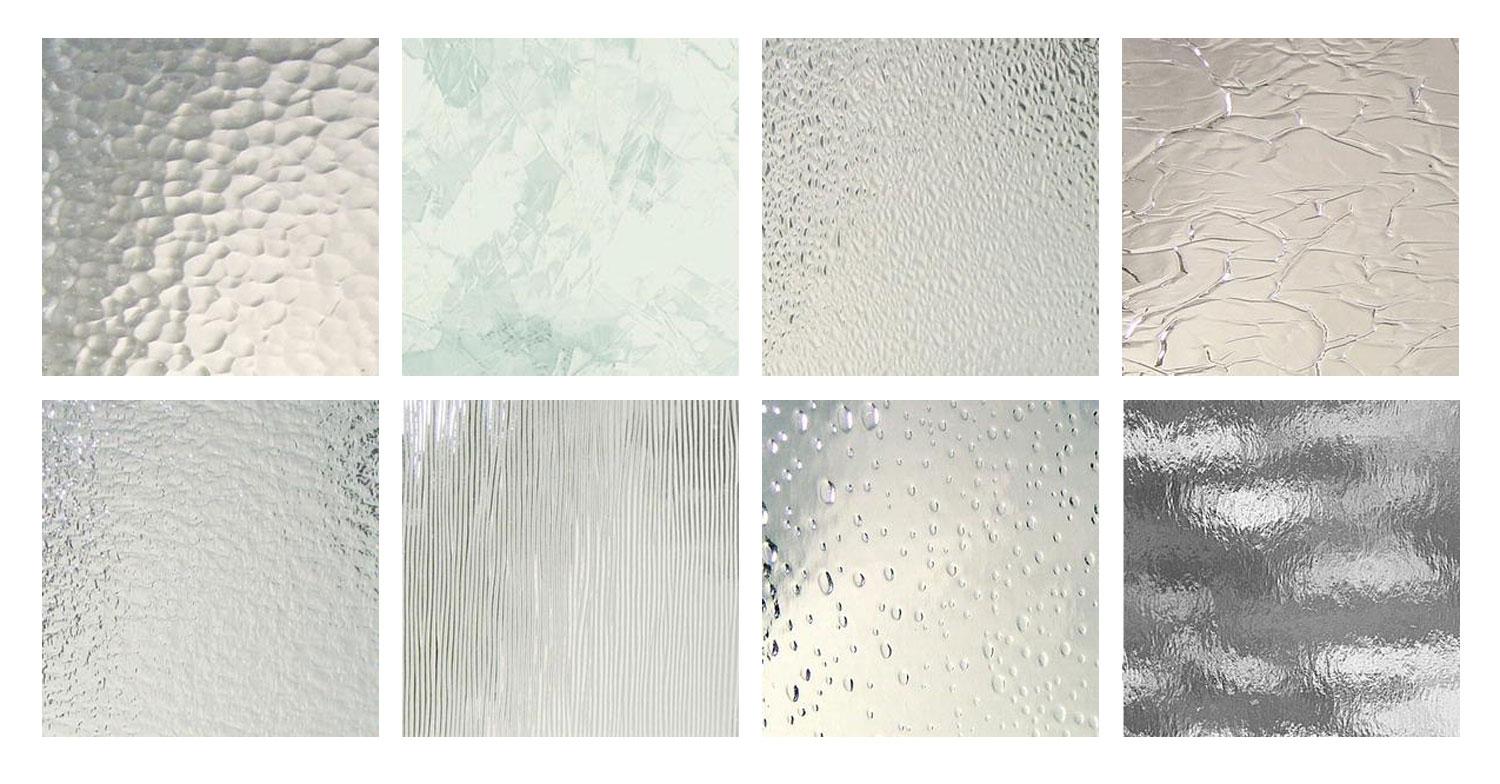
Where Can textured Glass Be Used?
Textured glass can be used in a variety of applications, both functional and decorative. Here are some common areas where textured glass finds its use:
Windows
and doors: Textured glass is often used in windows and doors to add
privacy while still allowing natural light to enter. It can be used in
residential homes, offices, and commercial buildings.
Shower
enclosures: Textured glass is a popular choice for shower enclosures as
it offers privacy in the bathroom while allowing light to pass through.
Frosted or patterned textures are commonly used in this application.
Partitions
and room dividers: Textured glass can be used to create partitions or
room dividers within a space, separating different areas while
maintaining a sense of openness. This is commonly seen in offices,
hotels, restaurants, and homes.
Cabinets
and shelving: Textured glass can be used for cabinet doors and shelving
to provide a decorative touch and add visual interest. It allows for
the display of items while partially obscuring the contents.
Staircase
railings and balustrades: Textured glass can be used in staircase
railings and balustrades to enhance safety while providing an elegant
and modern aesthetic.
Interior
decoration: Textured glass can be used for decorative purposes, such as
wall panels, room dividers, backsplashes, and tabletops. It adds
texture, visual appeal, and a unique element to interior spaces.
Lighting
fixtures: Textured glass is often used in lighting fixtures to create
interesting patterns and diffuse light. It can be found in pendant
lights, sconces, lampshades, and chandeliers.
Exterior applications: Textured glass can be used in exterior applications such as façades, skylights, and canopies to provide a decorative element while offering privacy and diffusing light.
These
are just a few examples of where textured glass can be used, but its
versatility allows for many other creative applications depending on the
specific requirements and design preferences.
Are There Any Alternatives to Installing Textured Glass?
As
mentioned, some people who are looking for a quick, easy and more
temporary solution may consider using a frosting window film or frosting
spray. These kinds of products are:
Relatively cheap and easy to find
Can all be self-applied – be careful to ensure you follow application instructions for a good seal
Come in many designs, patterns, densities and can be created with mirrored or UV filtering
Films
and sprays won’t be as effective as an actual frosted or textured glass
as they just sit on the glass rather than being part of it. They are
also less effective at night when internal lights are on, in fact, film
that creates a one-way mirror effect actually works the opposite way at
night.
Films and sprays are, however, a good way to find out what
kind of obscure glass or design offers the mix of privacy and light
that you prefer. This will be useful if you decide to install frosted or
textured glass in the future.
Does textured Glass Also Work at Night ?
Textured
glass can still provide some level of privacy and aesthetic appeal at
night, but its effectiveness may vary depending on the specific texture
and lighting conditions. Here are a few points to consider:
Ambient
light: If there is sufficient ambient light inside the room or from
external sources, textured glass can still obscure the view and provide
privacy at night. The level of privacy will depend on the opacity and
design of the texture. However, keep in mind that if the room is
brightly lit inside and the exterior is dark, it may be easier to see
through the textured glass from outside.
Interior lighting: If
you have interior lighting within the room or behind the textured glass,
it can enhance the privacy effect at night. The light will reflect off
the textured surface, making it more difficult to see through from the
outside.
External lighting: If there is external lighting, such
as streetlights or security lights, it can illuminate the textured glass
from the outside.
How do you make patterned glass ?
Patterned glass is typically made through a process called rolling or pressing. Here is a general overview of how patterned glass is made:
Preparation:
The process begins with the preparation of the raw materials, typically
silica sand, soda ash, limestone, and other additives. These materials
are mixed together and melted in a furnace to form molten glass.
Rolling
or pressing: Once the glass is in a molten state, it is poured onto a
metal table or between two metal rollers. The table or rollers have a
patterned surface that transfers the desired design onto the glass.
Rolling
process: In the rolling process, the molten glass is poured onto a
metal table and another metal roller presses down onto the glass. The
roller's pattern is engraved on its surface, and as it rolls over the
glass, it imprints the design onto the glass surface.
Pressing
process: In the pressing process, the molten glass is poured between
two metal rollers, both of which have a patterned surface. The rollers
come together and squeeze the glass, imprinting the pattern onto the
glass as it passes through.
Cooling
and annealing: Once the glass has been patterned, it undergoes a
controlled cooling process called annealing. This process gradually
cools the glass to relieve internal stresses and increase its strength
and durability.
Cutting and finishing: After annealing, the patterned glass is cut into the desired sizes and shapes. The edges may be further processed, such as grinding or polishing, to ensure smoothness and safety.
It's
worth noting that there are various types of patterned glass with
different patterns, textures, and opacities. Some patterned glass may
also involve additional processes, such as etching or frosting, to
achieve specific effects. The exact manufacturing process can vary
depending on the specific type and design of the patterned glass being
produced.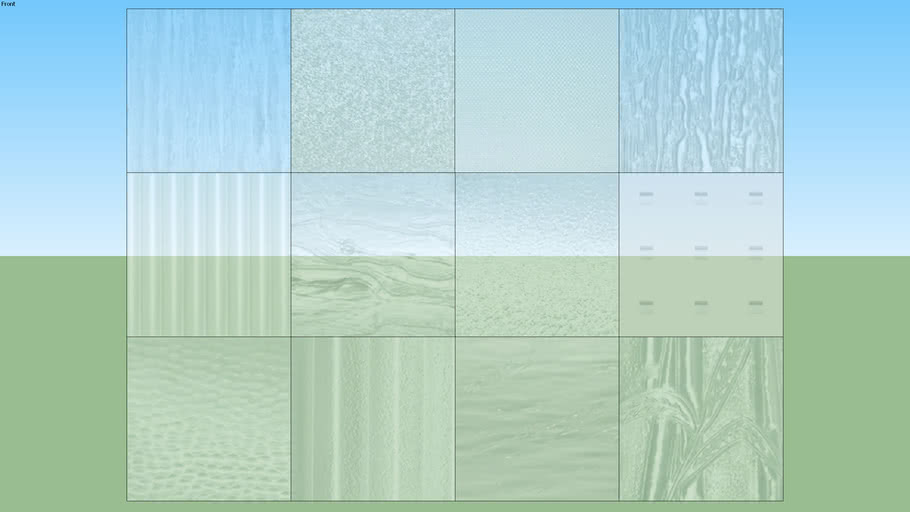
HHG is a professional glass manufacturer and glass solution provider include range of textured glass, tempered glass, laminated glass and etched glass. With more 20 years development, there are two produce lines of pattern glass ,two lines of float glass and one line of restoration glass. our products 80% ship to overseas, All our glass products are strict quality control and carefully packed in strong wooden case, ensure you receive the finest quality glass safety in time.
More Detail: www.hhglass.com